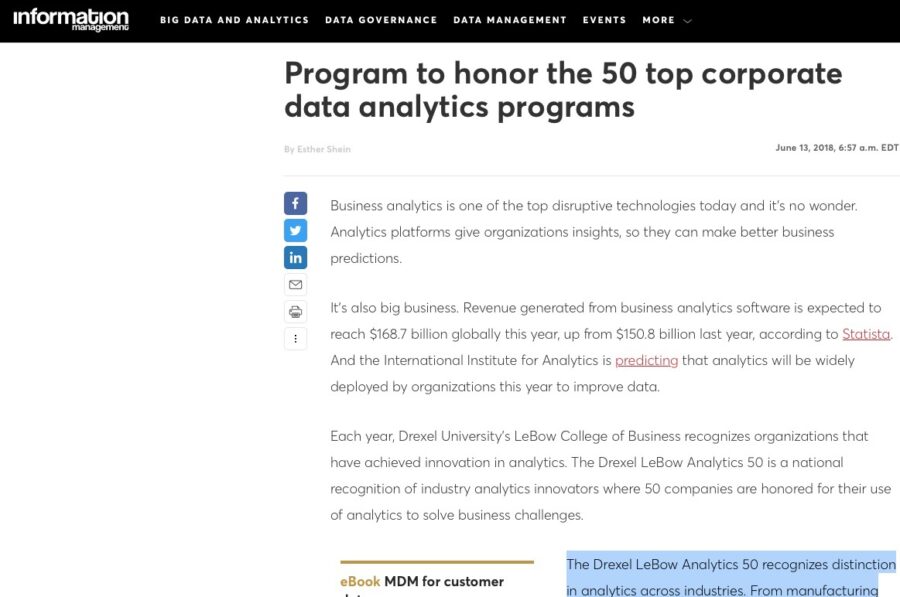Each year, Drexel University’s LeBow College of Business recognizes organizations that have achieved innovation in analytics. The Drexel LeBow Analytics 50 is a national recognition of industry analytics innovators where 50 companies are honored for their use of analytics to solve business challenges.
The Drexel LeBow Analytics 50 recognizes distinction in analytics across industries. From manufacturing and healthcare to government and retail, organizations are using analytics to improve decision making, combat crime and influence the way they operate and provide value.
Seattle Police Department
In 2011, The U.S. Department of Justice investigated the Seattle Police Department over community concerns about the use of force and biased policing, which had culminated in the shooting death of a native American wood carver. A department officer resigned and was later terminated.
The SPD signed a consent decree in 2012, acknowledging it lacked the data and systems to support meaningful oversight by supervisors of their officers’ actions, and that front-line officers were not consistently supplied with the tools and knowledge to de-escalate instead of resorting to uses of force.
To aid its ability to demonstrate compliance with the provisions of the decree, the department rolled out a data analytics platform, “DAP,” in 2017, which provides new systems of oversight, risk management, and statistical reporting.
The DAP is focused on performance analytics: what officers are doing and critical areas that need to be analyzed, says Brian Maxey, chief operating officer at the SPD. Prior to the platform, “We didn’t have reliable data to demonstrate what we were doing.’’
The DAP draws from a variety of sources, including a computer-aided dispatch system and a records management system, he says. Officials also created a template for Terry stops, when a person is briefly stopped by police on suspicion of criminal activity. “We now record every single stop, and also every time someone is frisked,’’ Maxey says.
A crisis template was also developed, which records information every time an officer encounters someone they believe to be in some form of crisis that sometimes result in the use of force.
Since the DAP has been in place, “We found less than 2 percent of our encounters with people in crisis end up with any use of force,’’ he says. “This is the sort of granular data analysis the template allows us to do. We couldn’t have told you that four years ago.”
The DAP dashboards allow supervisors to see the data, which gets pushed out using visualization and analytics tools, he says.
Today, the SPD is making raw data available on its website for full transparency.
“The data is unprecedented in policing — all the information we gather about our Terry stops, frisks, crisis intervention and use of force, including officer-involved shootings—we put it out publicly,’’ Maxey says.
The department is about to release a supervisor dashboard to give sergeants metrics on every officer working for them. With ready access to how many calls officers are responding to, how many Terry stops, crisis calls and use of force incidents, “they’ll have a better situational view upfront,’’ he says.
Ideally, this will prompt sergeants to intervene or support their officers better because they’ll have more information, which should improve how officers are performing on the street, he says.
Police officials now also have visibility to detect trends and benchmark officers, bringing new understanding to how the department operates, Maxey says. “Because we have data around all these performance metrics, not only are we looking at adjusting policy, we’re looking at training and better ways to handle outcomes.”


